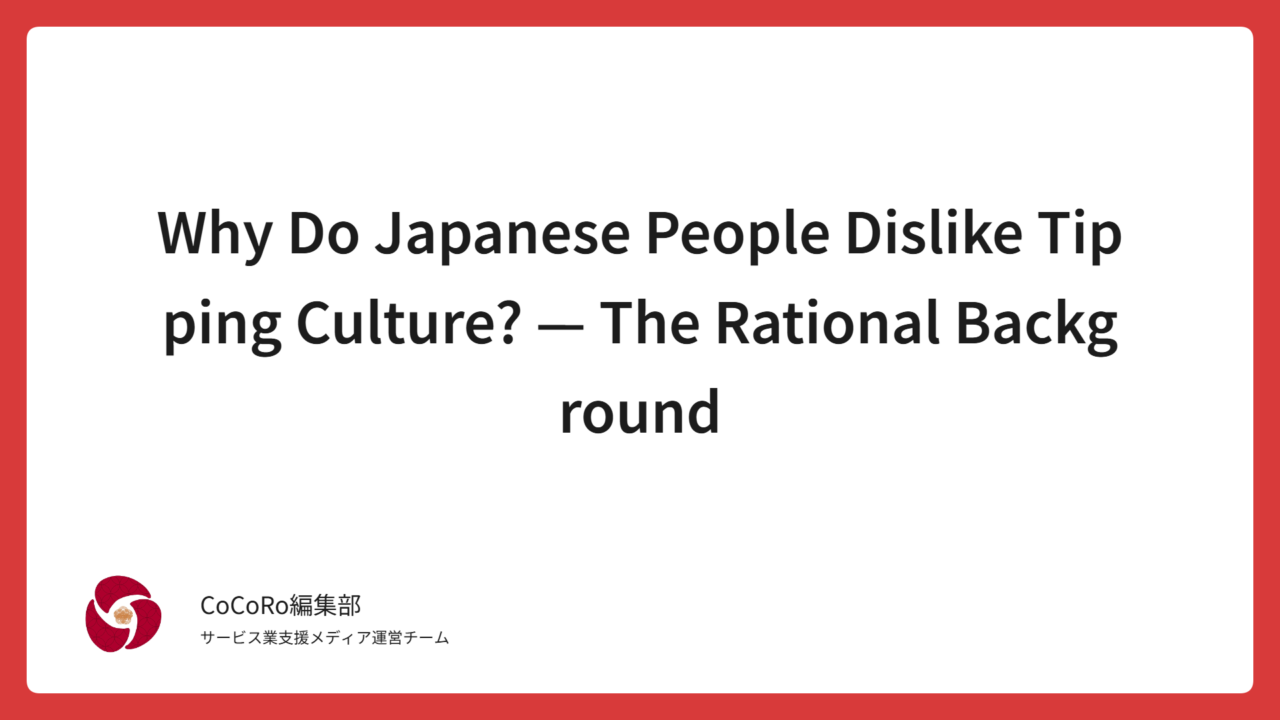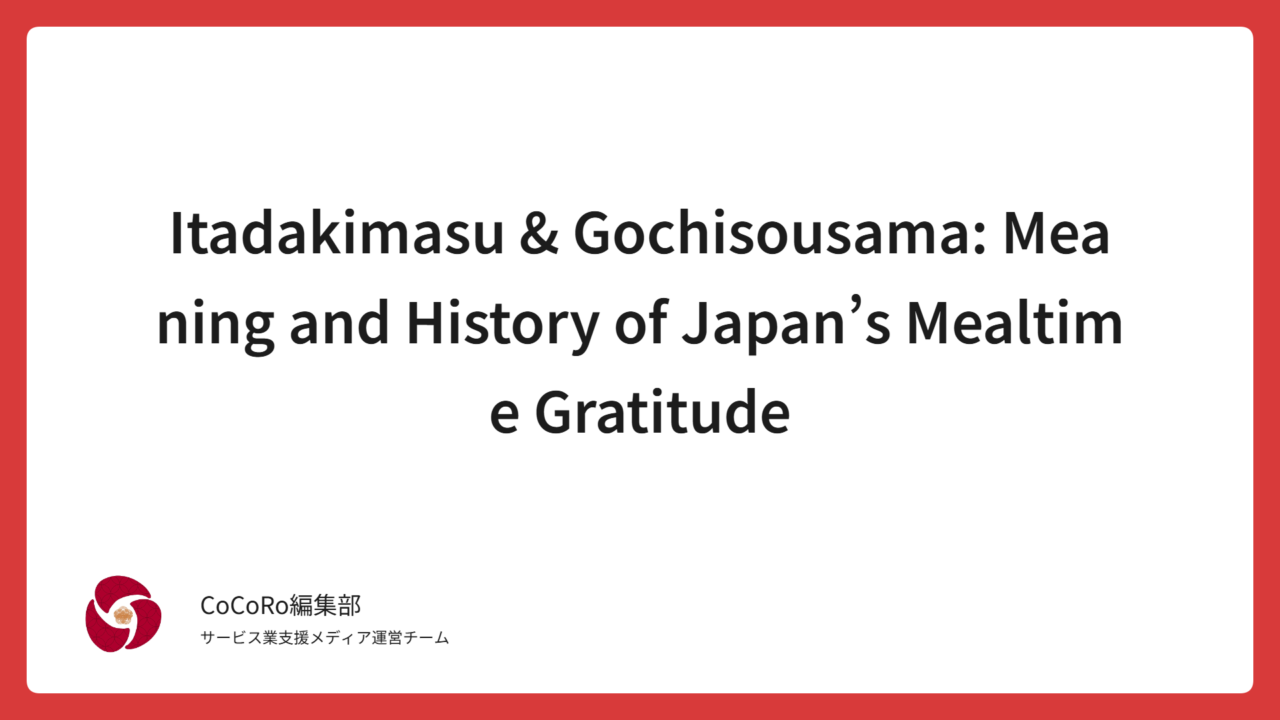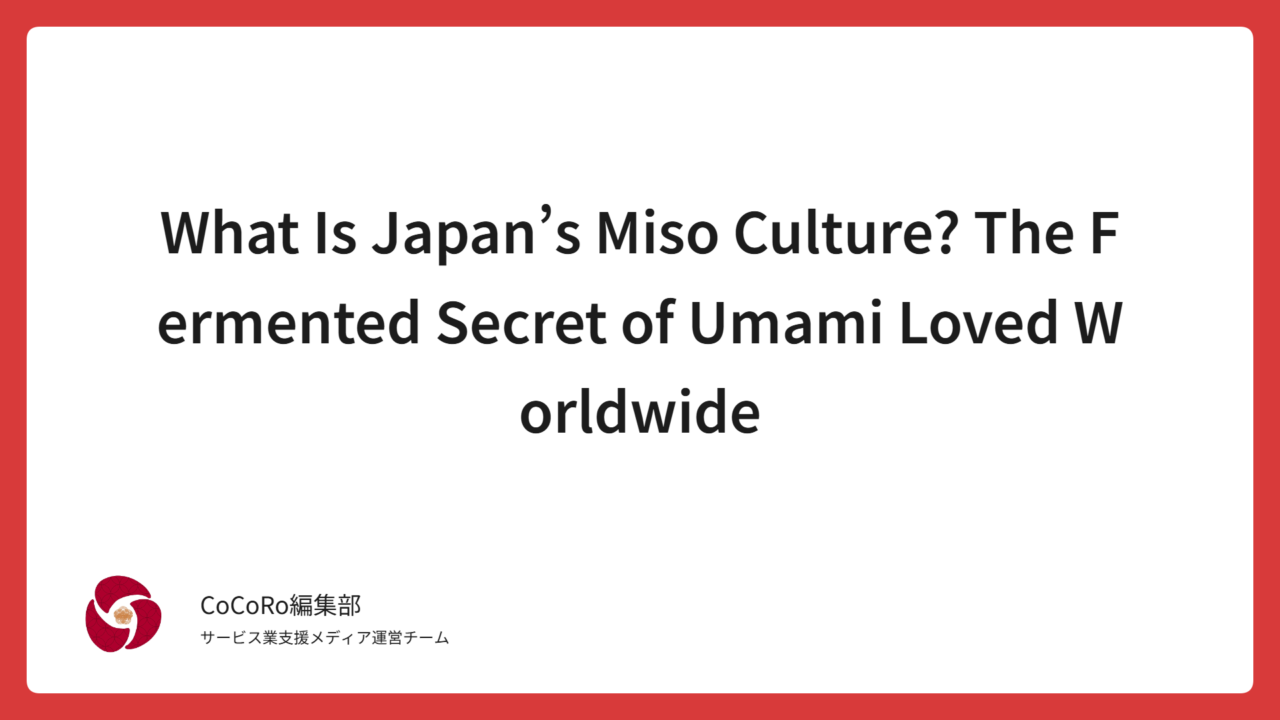
- Introduction
- Chapter 1: What Feels “Normal” to Japanese People, but “Amazing” to Foreign Visitors
- Chapter 2: Cultural Roots — Habits of Cleaning and Consideration
- Chapter 3: How School Education Shapes Japan’s Cleaning Culture
- Chapter 4: How Regulations and Safety Measures Support Japan’s Cleanliness
- Chapter 5: Public Facilities and Urban Beautification in Japan
- Chapter 6: How the Broken Windows Theory Functions Across Japanese Society
- Chapter 7: Japan’s Cleanliness as a Relatively Recent Cultural Development
- Chapter 8: International Comparison — Is a Clean Society Possible in Other Countries?
- Summary
Introduction
“Japan is so clean.” This is a phrase often repeated by foreign visitors on social media and in travel blogs. Even though there are very few trash cans in train stations and on city streets, you rarely see litter on the ground. Public toilets are free for anyone to use, yet they are kept astonishingly clean. Train cars and station platforms are almost completely free of dirt or graffiti. For Japanese people, these sights may feel ordinary, but to visitors from abroad, they appear truly remarkable.
However, many Japanese people themselves often think, “It’s not actually that clean” or “After a night out or a big event, the streets are full of trash.” Why, then, is there such a gap between how foreigners and Japanese perceive cleanliness in Japan? And what historical and cultural factors lie behind Japan’s reputation as a remarkably clean country?
In this article, we explore why Japan appears so clean from four perspectives: culture, education, regulations, and historical background. We also address the question, “Has Japan always been a clean country?” and reveal how the nation’s reputation for cleanliness is, in fact, a relatively recent development.
Chapter 1: What Feels “Normal” to Japanese People, but “Amazing” to Foreign Visitors
The first point to understand is that the level of cleanliness Japanese people consider “normal” often comes as a real surprise to foreign visitors.
For example, one of the first things foreign tourists wonder about is: “Why are the streets so clean in Japan even though there are hardly any trash cans?” In major cities like New York, Paris, or Bangkok, it is common to see trash cans overflowing and litter scattered around them. In contrast, except after large events or late at night in busy entertainment districts, it is rare to find Japanese streets covered in garbage.
Another aspect that shocks many foreign visitors is the cleanliness of Japan’s public toilets. In many countries, public restrooms are often avoided because they are dirty and unpleasant to use. In Japan, however, even toilets in train stations or public parks are relatively well maintained, and people are surprised to find toilet paper provided for free. The fact that these facilities remain clean while being free and open to everyone is exceptionally rare on a global scale.
On the other hand, many Japanese people feel that “there is still trash” and that the country is not 100% clean. In reality, during crowded times in busy entertainment districts or popular tourist spots, litter can be scattered on the streets, and not every restroom is equipped with the latest facilities. Because Japanese people notice these imperfections, they often wonder whether their country is really as clean as outsiders claim.
For foreign visitors, however, the contrast with their own countries is so striking that Japan leaves a strong impression as being exceptionally clean.
Chapter 2: Cultural Roots — Habits of Cleaning and Consideration
At the heart of Japan’s cleanliness lies a cultural foundation that has been cultivated over many generations.
One symbol of this mindset is the traditional saying “Muko-sangen ryōtonari.” It teaches that people should care not only for the space in front of their own home, but also for the three houses across the street and the two houses next door. In other words, it has long been considered natural in Japan to maintain not just one’s own property, but the surrounding environment as well.
If you take a walk through a Japanese neighborhood in the morning, you will often see residents or shop owners sweeping in front of their homes or stores. It is not uncommon for them to extend their cleaning beyond their own property, tidying the sidewalks in front of their neighbors’ places as well. This practice is more than just personal satisfaction — it is a sign of consideration for the surrounding community.
In Western countries, people may take care of their own yards or lawns, but there is little tradition of cleaning public spaces. Street and park maintenance is generally considered the responsibility of local authorities or hired cleaners, and it is rare for residents to sweep these areas voluntarily. In contrast, Japan has a unique culture where public space is often regarded as an extension of one’s own living area.
Chapter 3: How School Education Shapes Japan’s Cleaning Culture
Another key pillar supporting Japan’s culture of cleanliness is the cleaning routine built into compulsory education.
In Japanese elementary and junior high schools, there is a designated “cleaning time” when students themselves clean classrooms, hallways, and even toilets. In most other countries, this work is handled by janitors, so the idea of students taking on the cleaning is quite rare.
This practice is not just about hygiene management; it also functions as an important part of character building in Japanese education.
- By cleaning the areas they have used themselves, students develop a strong sense of responsibility.
- By working together with classmates to clean, students cultivate a strong sense of cooperation and teamwork.
- トイレや廊下といった公共空間を掃除することで「公共心」が育まれる
By cleaning public spaces such as toilets and hallways, students nurture a sense of civic-mindedness and respect for shared environments.
So why don’t children clean in many other countries?
One reason is the belief that cleaning equals labor. In Western societies, cleaning is considered the job of workers, and having children do it is not seen as educational. Instead, civic-mindedness is often fostered through volunteer activities, such as community clean-ups or charity work.
In short, Japan fosters civic responsibility through daily cleaning education, while many other countries cultivate it through volunteer activities at specific events.
Chapter 4: How Regulations and Safety Measures Support Japan’s Cleanliness
Japan’s cleanliness is supported not only by culture and education but also by regulations and safety measures.
After the 1995 Tokyo subway sarin attack, trash cans were removed from train stations and city streets. At first, many people felt this was inconvenient, but over time the habit of taking garbage home became widespread. As a result, litter left on the streets decreased significantly, and overall cleanliness was better maintained.
In 2002, Chiyoda Ward in Tokyo introduced Japan’s first ordinance banning smoking on the streets. This regulation soon spread nationwide, leading to a sharp decline in both walking smokers and cigarette litter. While it was inconvenient for smokers, the measure greatly improved the overall appearance and cleanliness of Japanese cities.
Although many Japanese initially see such rules and restrictions as inconvenient, they gradually accept and adapt to them until they become part of daily life. This adaptability is a key factor in sustaining Japan’s reputation as a clean country.
Chapter 5: Public Facilities and Urban Beautification in Japan
A major turning point in Japan’s international reputation as a “clean country” came with the improvement of its public facilities.
Renovation of Public Toilets and Train Stations
From the Showa era (1926–1989) through the early Heisei era (around 1989–1995), public toilets in Japan were often synonymous with being dark, smelly, and dirty. Many people even avoided using station restrooms altogether. However, starting in the 2000s, large-scale renovations were carried out, driven by upcoming international events. With the 2002 FIFA World Cup co-hosted by Japan and South Korea and the 2020 Tokyo Olympics, Japan needed to present clean and well-maintained facilities as part of its international brand.
Rising Administrative Costs and the Reasons Behind Them
The cost of keeping public facilities clean has undoubtedly increased. Beyond renovation expenses, cleaning operations have shifted from being carried out only a few times a day to a more continuous, patrol-based system, which has significantly raised labor costs. So why did the government choose to accept these rising expenses?
There are three main reasons behind this decision.
- 1. The Need for Infrastructure Renewal: Many facilities built during Japan’s period of rapid economic growth had become outdated and required major upgrades.
- 2. Crime Prevention and Public Safety: Dirty or poorly lit facilities were seen as potential triggers for crime, making improvements essential.
- 3. Tourism Strategy: Cleanliness itself was positioned as a symbol of omotenashi (Japanese hospitality), with the expectation that investments would be recovered through tourism revenue.
Why Don’t Other Tourist Countries Do the Same?
So why don’t tourist cities like Paris, Rome, or Bangkok invest in cleanliness at the same level as Japan? The reasons lie in differences of culture and institutional systems.
- The Paid Toilet Culture: In much of Europe, public restrooms are fee-based and cleaning is outsourced to private companies. The idea of providing free and well-maintained toilets is far less common.
- Caution in Tax Spending: In many countries, it is difficult to gain public support for allocating large amounts of tax money to public toilets or street cleaning.
- Different Tourism Priorities: In many countries, historical landmarks and natural landscapes are the main attractions, so cleanliness is not emphasized as heavily as it is in Japan.
- Cultural Differences: In Japan, cleanliness is regarded as an essential part of omotenashi (hospitality) and is directly tied to the country’s image strategy.
In other words, Japan has deliberately chosen cleanliness as a strategic asset, while other countries highlight different strengths as their core tourism resources.
Chapter 6: How the Broken Windows Theory Functions Across Japanese Society
When explaining Japan’s cleanliness, the Broken Windows Theory is an essential concept that cannot be overlooked.
The Broken Windows Theory suggests that if small signs of disorder are left unattended, they can lead to larger problems and even crime. In Japan, this concept functions across society as a whole.
When small amounts of litter or graffiti appear, residents or cleaners promptly take care of them. Pruning of roadside trees and cleaning of public facilities are handled by local governments or contractors, maintaining the environment in ways that are often unnoticed. In addition, landscape ordinances and beautification regulations help prevent urban decay.
One particularly interesting example is the reality of fallen leaf cleaning. In practice, it is not only the government but also residents, shop owners, neighborhood associations, and volunteers who share the responsibility for sweeping. Since government work is often carried out early in the morning, it is rarely noticed, but it does function reliably. This effort is then supplemented by residents who voluntarily step in, ensuring that the streets remain clean at all times.
In this way, Japan embodies the Broken Windows Theory on a national scale, as both government and residents share responsibilities and ensure that even small signs of disorder are never left unattended.
Chapter 7: Japan’s Cleanliness as a Relatively Recent Cultural Development
At this point, one might assume that Japan has always been a clean country. In reality, however, the level of cleanliness seen today was established only relatively recently.
During the Showa era (1926–1989) and the early Heisei years (1989–1990s), smoking on the streets and littering were commonplace. Ashtrays were installed in train stations and even inside trains, and it was normal to see cigarette butts scattered around. Public toilets were dark and unsanitary, often considered places to be avoided. In entertainment districts, graffiti and illegal posters were widespread, and urban landscapes were far less orderly than they are today.
However, from the mid-1990s onward, safety measures, new regulations, and urban beautification advanced rapidly. A series of initiatives — such as the removal of trash cans after the sarin attack, smoking bans on the streets, renovation of public facilities, and preparations for the Olympics — quickly established Japan’s image as a remarkably clean country.
In other words, the belief that “Japan has always been clean” is a misconception. In reality, the current level of cleanliness is a relatively new cultural development that has taken shape over the past 20 to 30 years.
Chapter 8: International Comparison — Is a Clean Society Possible in Other Countries?
Finally, we consider whether Japan’s cleanliness is the result of a truly unique culture, or if it is something that could also be applied in other countries.
Japan’s defining feature is its culture of residents voluntarily cleaning public spaces. Tasks that are considered the responsibility of local authorities in Western countries are naturally taken on by citizens in Japan. Combined with education and regulations, this mindset helps sustain a clean and orderly society.
On the other hand, Singapore is also known as a “clean country,” but its system is quite different. In Singapore, cleanliness is maintained through a top-down approach of strict penalties and professional cleaners. Japan, by contrast, achieves cleanliness through a bottom-up approach rooted in cleaning education and civic-mindedness.
Thus, even though the systems may differ, creating cleanliness as a social norm is entirely possible in other countries. By combining regulations, education, infrastructure development, and volunteer activities, it is feasible to aim for a “clean country” similar to the Japanese model.
Summary
Japan’s cleanliness is not a matter of chance.
- The Cultural Foundation of “Muko-sangen Ryōtonari” (Caring for Your Neighbors)
- The Cleaning Habit in Japanese School Education
- Regulations After the Sarin Attack and the Ban on Street Smoking
- Investment in Public Facilities and Urban Beautification
- A Society That Never Ignores Small Disorder — Japan’s Broken Windows Effect
All of these factors have accumulated to form a new cultural norm over the past 20 to 30 years. When foreign visitors are amazed by how exceptionally clean Japan is, it is because the country has deliberately nurtured cleanliness through both national policy and cultural practices. And this model is something that could very well be replicated in other countries.






